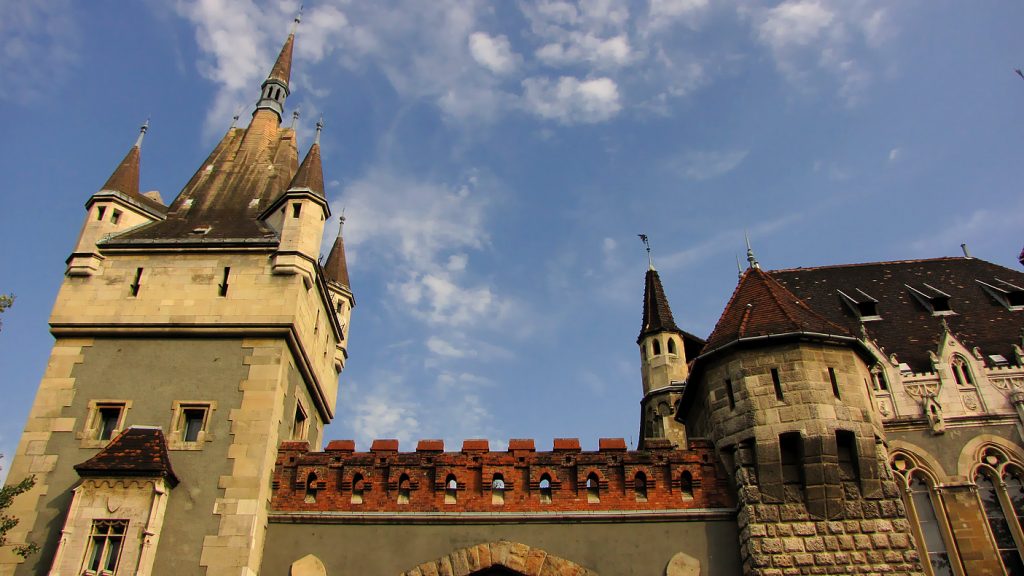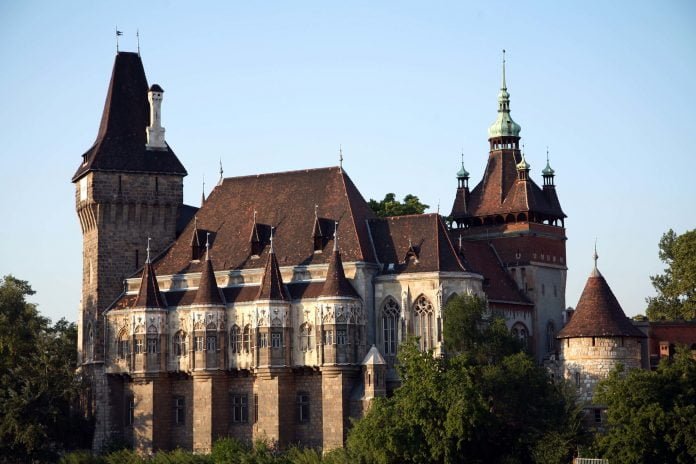Built during the Romantic period, Vajdahunyad Castle is one of the main tourist attractions in Hungary. The architecture of the castle offers a classic fusion of the Romantic and Renaissance architectural styles. While looking at the castle, you can see the medieval Gothic style amalgamating with the eclectic Romantic vibes. This Romantic beauty not only attracts thousands of visitors every year but is also a home for several cultural activities, classical concerts, and exhibitions in Hungary.
If you are interested in the historical value of the castle or looking forward to visiting Vajdahunyad Castle and want to know the best tips and tricks for your visit, we have you covered. In the coming sections, we will introduce you to the castle’s history as well as provide you with necessary tips and up-to-date information regarding visiting hours and ticketing prices, to ease your visit.
Table of Contents
Given its Gothic vibes, the castle was posited to be the home of Count Dracula.

Frequently Asked Questions
Where is Vajdahunyad Castle Located?
Vajdahunyad Castle is located in Budapest, Varsoliget, Vajdahunyadvar, Hungary.
When was Vajdahunyad Castle Built? Who Build It?
Vajdahunyad Castle was built in 1896 as a part of the Millennial exhibition by King Charles I of Hungary.
When is The Best Time to Visit the Castle?
The castle is open for visitors around the year. However, the best time to visit the castle is from March to mid-May where you will get to enjoy the summer breeze and long visiting hours.
What Other Monuments are Located Nearby?
While you are out to visit Vajdahunyad Castle, there are numerous other historical monuments that you can visit nearby including the Millennium Monument, Heroes’ Square, and Gatehouse Tower.
FOR HISTORY | BEAUTIFUL IMAGES | INTERESTING FACTS | TRAVEL TIPS
Early History
From Hunyadi Castle to Vajdahunyad Castle
The land where the castle is built was a gift from King Sigismund, a Hungarian, to the Hunyadi family. The Hyundai castle was erected in 1409 as a noble palace for the knights. The castle included Gothic-style tall defense towers with a drawbridge, a knight’s hall, and the Capistrano tower. Vajdahunyad Castle is believed to be an expansion of the Hunyadi castle during the reign of King Charles 1 of Hungry.

Structurization of Vajdahunyad Castle
The construction of Vajdahunyad Castle dates to 1896 when Iganc Alpar designed the architecture of the palace. The castle was built to commemorate the settlement of the first medieval Magyars on the plains of Pannonia. The castle was built as part of the Millennial Monument, as well as two other Budapest attractions: Heroes’ Square and Fisherman’s Bastion on Buda Castle Hill.

Shift from Temporary Exhibition to Permanent Castle Structure
The original structure of the castle was intended as a temporary exhibition, the structure was built using wooden planks and cardboard designs. However, the castle’s exhibition attracted the attention of the Hungarian public. The orders for permanent construction were initiated by the Hungarian government, and the work started between 1904 and 1908.

With its permanent construction, the castle’s design was slightly modified by borrowing architectural inspiration from the Austro-Hungarian empire to blend with the Gothic elements within the original design of the castle.
Revisit More Historic Places Below or Read Further
Current Times
At present, the castle stands proud as a symbol of Hungarian history as well as a memory of architectural styles of the Roman and Gothic periods of the past. The Chapel of Jak in Vajdahunyad Castle is a replica of the Roman-style basilica of the Benedictine Monastery, built around 1256 AD.

Similarly, the inner wooden beams and turrets of the castle mimic the other Gothic castle of Hungary. Vajdahunyad Castle is known today as the best of Hungarian Gothic castles. The castle is also home to the Museum of Hungarian Agriculture which includes the history of agriculture in Hungary, starting from the domestication of animals, forestry, and fishing to the present-day situation of the agricultural traditions in the country.

Interesting Vajdahunyad Castle Facts
- Vajdahunyad Castle is believed to be a copy of Hunyad Castle in Romania, also known as Corvin Castle.
- Given its Gothic vibes, the castle was posited to be the home of Count Dracula.
- The castle also incorporates Renaissance and Baroque inspiration in its architectural design.
- The Museum of Hungarian Agriculture within Vajdahunyad Castle is the biggest agricultural museum in Europe.
Visiting Vajdahunyad Castle – Tips and Tricks
Given its Gothic vibe, archaic architectural inspiration, and historical significance, Vajdahunyad Castle is a must-visit while you are in Budapest, Hungary. If you are looking for critical information about how to visit the castle including the visiting hours, ticketing prices, and other tips and tricks, we have you covered. In the following section, you will find all the necessary information that you need to know before booking your visit to Vajdahunyad Castle.

How to get to Vajdahunyad Castle?
Availing of public transport is the fastest and cheapest way to reach Vajdahunyad Castle. You can take the subway to the castle for €0.89 ($1 USD) or the Line 70 bus for €1.78 ($2 USD). Taking a taxi to the castle from Budapest can cost around €4.4 ($5 USD).
Ticket Prices, Visiting Hours & Travel Tips
Information was checked & updated on October 29, 2023.
Although the castle is open for visitors around the year, the opening hours of the castle vary according to the season. From April till October, the castle opens from 10 am to 3 pm, Tuesday to Sunday. During winter (November till March-end), the castle opens up from 10 am to 5 pm, Tuesday to Sunday. Mondays, the castle is closed year-round. If you are a person who prefers to avoid bustling crowds, it is best to avoid visiting from 10 am to 11 am.
The entry to the castle grounds, including the castle’s courtyard, is free. You can also take free photos of the outside of the castle. However, to visit the inside of the castle and the included permanent exhibition, you have to pay a small ticketing fee. The ticket prices vary depending on the visitors. For adults, the ticket price is HUF2500 (USD $7). For students as well as the senior citizens, the price is half-off: HUF 1200 (USD $3). If you are interested in conducting a wedding photoshoot, it can cost around HUF 10,000 (USD $31).
Since photography is allowed in Vajdahunyad Castle, make sure to take a lot of pictures for keepsake during your visit. You can also enjoy some of the cultural festivals or concerts conducted in Vajdahunyad Castle if you come to visit around spring or summer break.

How Long Will It Take to Tour Around?
It takes about three hours on average to finish a complete tour of the castle.
Up to Date Information
For up to date ticket prices and visiting hours visit the official website: https://vajdahunyadcastle.com/
Some words of advice and tips:
- There is a statue of the anonymous, unknown writer of the Gesta Hungarorurm in the palace grounds.
- It is best to book your tour in advance to save yourself from the hustle of getting tickets from the ticketing office.
- Be mindful that pets are not allowed within the premises of the castle.



